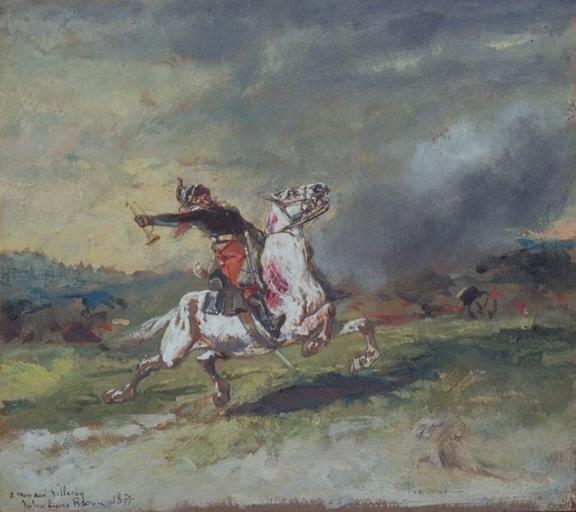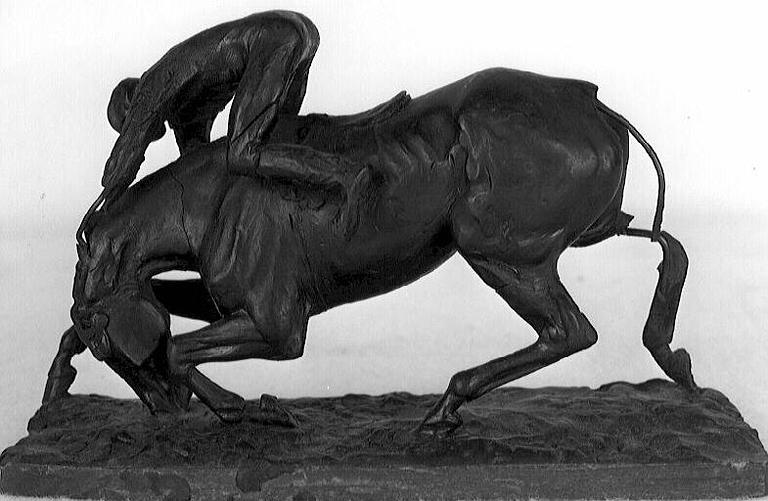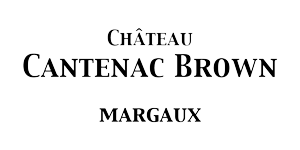Chateau Cantenac Brown, Grand Cru Classé from 1855, in Margaux was founded 200 years ago by a Scottish John Lewis Brown. Recognizable by its spectacular Tudor-style chateau, Cantenac Brown is still family owned today and has announced the construction of a new, unique winery made entirely of raw earth.
The Château Cantenac Brown has a rich history and one of its famous protagonists is none other than John Lewis Brown. A painter, John Lewis Brown is a true witness of the 19th century and leaves a substantial legacy to the estate. Talented and emblematic character, he is particularly integrated into the artistic and aristocratic society of the time. We can thus count correspondences with Manet, Degas, or Pissaro. While the war marked a turning point in his work, it is of an important diversity that we invite you to discover.
John Lewis Brown: painter of the 19th century
John Lewis Brown was born on August 16, 1829 in Bordeaux. The passion for painting comes very quickly for him who excels in the matter. Thus, from the age of 12, he joined the fine arts of Paris and accumulated impressive achievements. However, the return of the Republic in 1848 and the financial difficulties the Brown family was experiencing forced him to rely only on himself. Thus, in 1852, he received his first commission: a copy of a Rembrandt from the Copenhagen Museum.
During his life as an artist, John Lewis Brown travelled throughout Europe, notably to Denmark and Italy. He lived, of course, in Bordeaux, at the roots of the family, between 1854 and 1859.
During the Franco-Prussian War of 1870, he was an officer in the imperial army and attached to the General Staff of the Duke of Magenta: the future President Mac-Mahon. He then entered Paris at his side, just after the massacre of Parisians by the Prussians.
John Lewis Brown continued his work on which the imprint of the war and its traumas is omnipresent. The painter was made Knight of the Legion of Honor at the 1878 Universal Exhibition in Paris. He died in Paris in November 1890.
The turning point of war in the life of John Lewis Brown
The War of 1870 marked a turning point in the life of John Lewis Brown, which is reflected in his work. He was particularly marked by this war and by the vision of the battles. In the aftermath of the conflict, many paintings depict battles. Indeed, in the General Staff of Marshal Mac-Mahon, he witnessed the Battle of Reichshoffen and the entry into the city of Paris. John Lewis Brown did not come out unscathed from these experiences. If picking up his brushes again was a difficult task for him after the war, he also found in art a way to express what he had experienced. The military theme then emerges with several major works of this period including :
- Journée du 6 août, Reichshoffen.
- La nouvelle de la défaite de Wissembourg arrive à Haguenau
- Avant-postes du IVe Corps de l’Armée du Rhin
- Episode de la bataille de Froeschwiller
- Trompette de Reichshoffen
- Combat de cavaliers (lithographie).

Works and Influences of John Lewis Brown
To fully understand John Lewis Brown, it is necessary to dive into his world and grasp the themes that inspired him. Moreover, fully integrated in his time, the painter leaves a definite influence on the arts through his interactions with many artists.
John Lewis Brown’s inspiring themes
The work of John Lewis Brown is based on themes that have marked his life. Among these are two major themes: horseback riding and war.
First, horseback riding is a field of predilection for the painter. In his youth, he followed a 2-year course at the Ecole des Haras du Pin where he studied horseback riding and horses. The memory of this time will remain engraved and this theme will serve as a common thread in his work.

Equidae never ceased to accompany the painter in his work. As such, Léonce Bénédite affirmed in 1903, in the review of ancient and modern art: “To say that in his work man was often only the pretext of the horse could seem a mischief”. A few years earlier, in 1885, John Lewis Brown also commented on this aspect of his work by stating in the press: “It is insinuated that painting the horse is the resource of mediocre painters. I believe, on the contrary, that it takes a great deal of skill and an infinite amount of riding. Never have the animals had so much physiognomy, poor lorries of the streets which go away dragging carriages and coachmen or delicate triumphs of the solemnity of the turf…”.
Moreover, the war of 1870 was a striking episode for the painter. Following it, we note the development of military subjects in his work: a way for him to exteriorize and transmit his experience. Moreover, it is worth noting that even within these military subjects, the horse theme returns. This is the case, for example, in the drawing below dating from 1887.

In 1953, the Musée des Beaux Arts de Bordeaux devoted an exhibition to the work of John Lewis Brown. This one then joins the posterity and continues to radiate in our memories.
Correspondences and influences
John Lewis Brown’s main models and sources of inspiration were the painters Georges Morland, for whom animal scenes are a recurring theme, Claude Joseph Vernet, famous for his marines, Antoine-Jean Gros, whose battle paintings are a reference, or Théodore Géricault, whose “Radeau de la Méduse” is the most famous work.
Finally, John Lewis Brown was very much integrated in the circle and correspondence of the painters of his time: Manet, Degas, Isabey, Pissaro, Sisley. His influence and exchanges in the artistic milieu of the time still reach us today. John Lewis Brown marked the artistic landscape of the 19th century and, at the same time, the history of Château Cantenac Brown.


